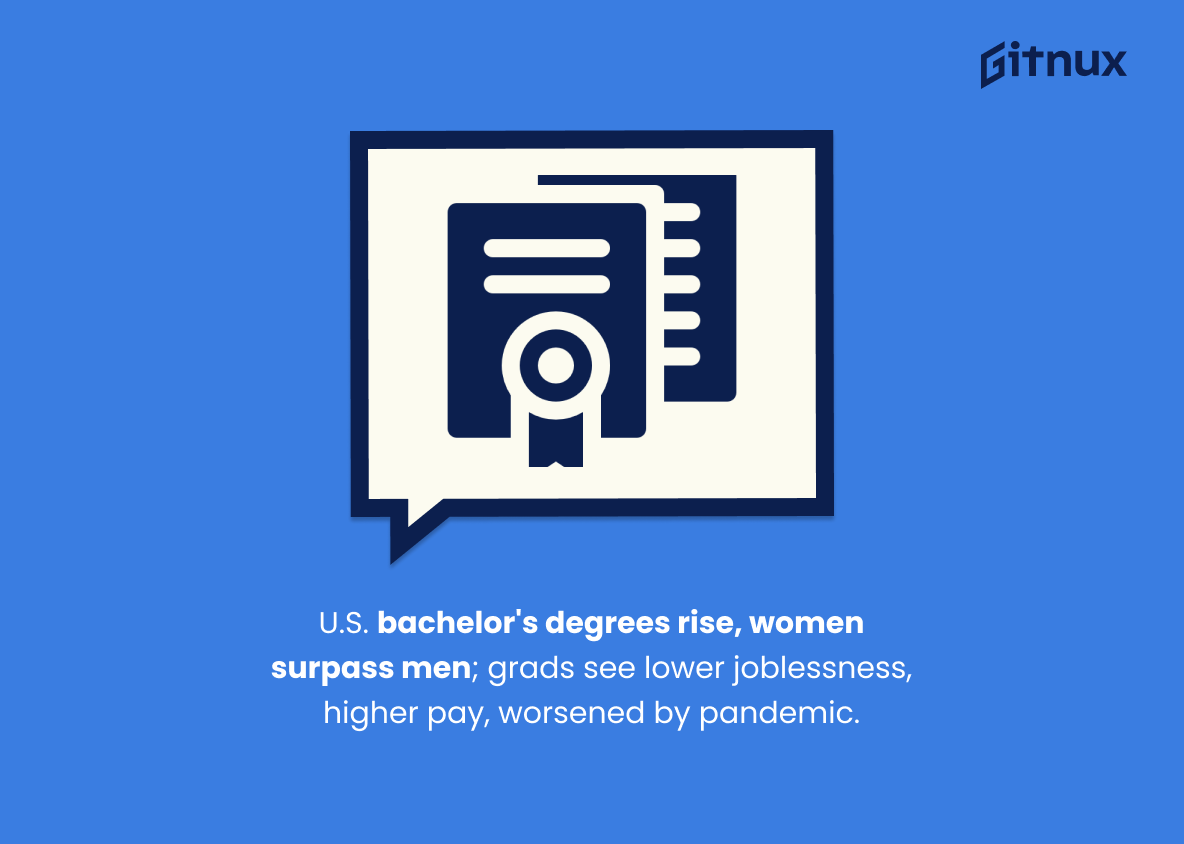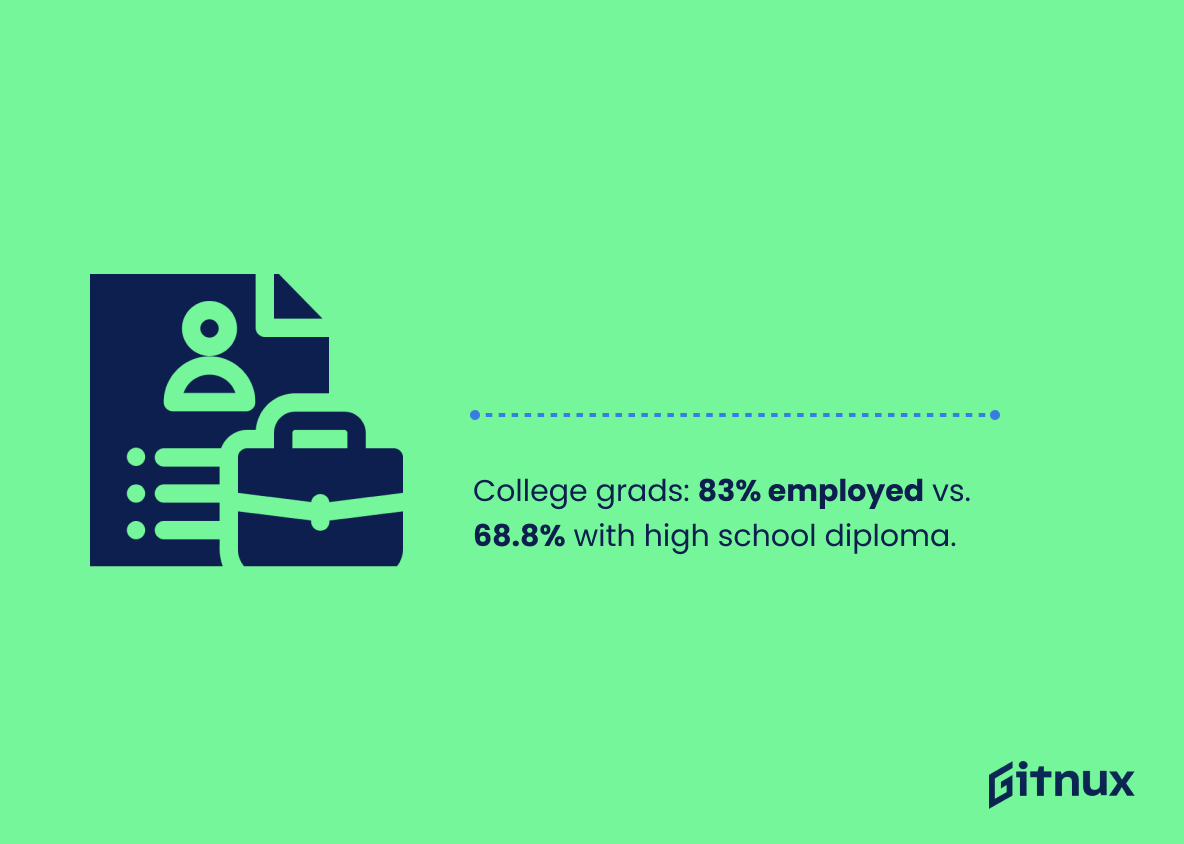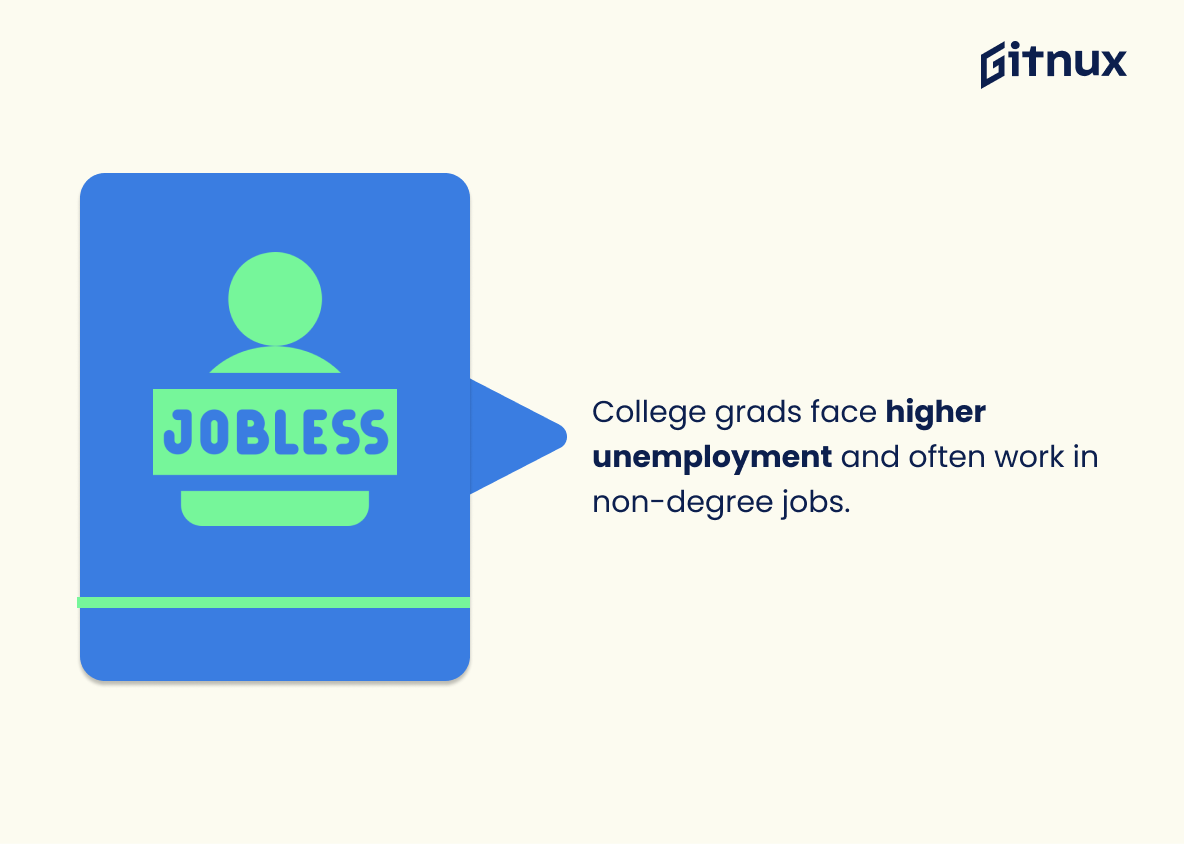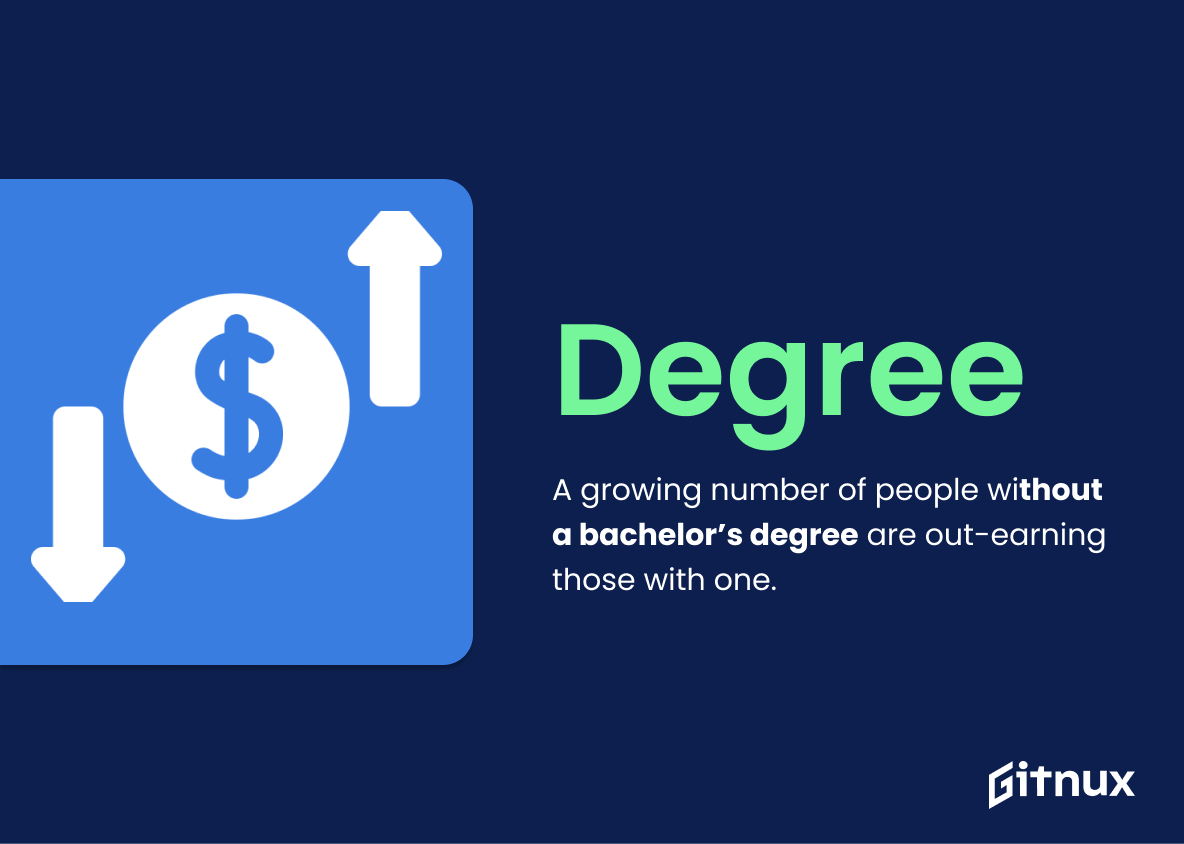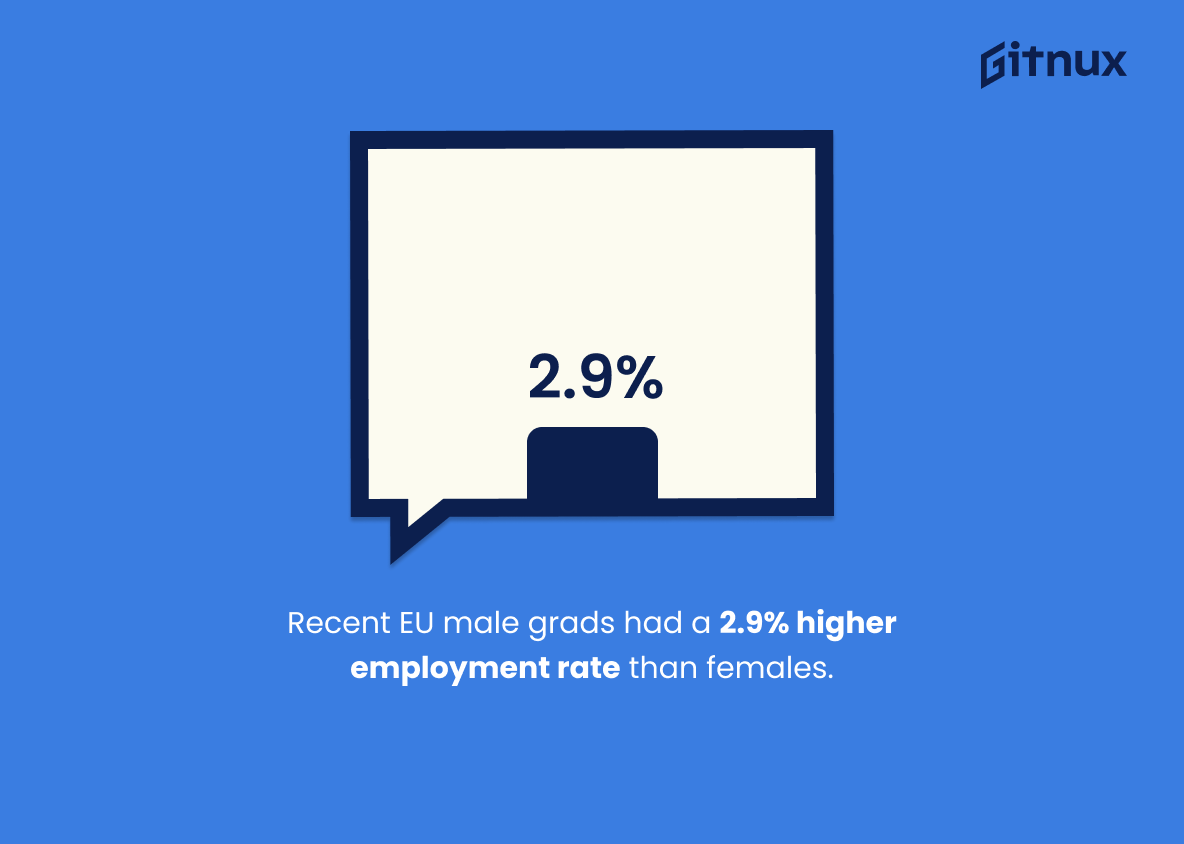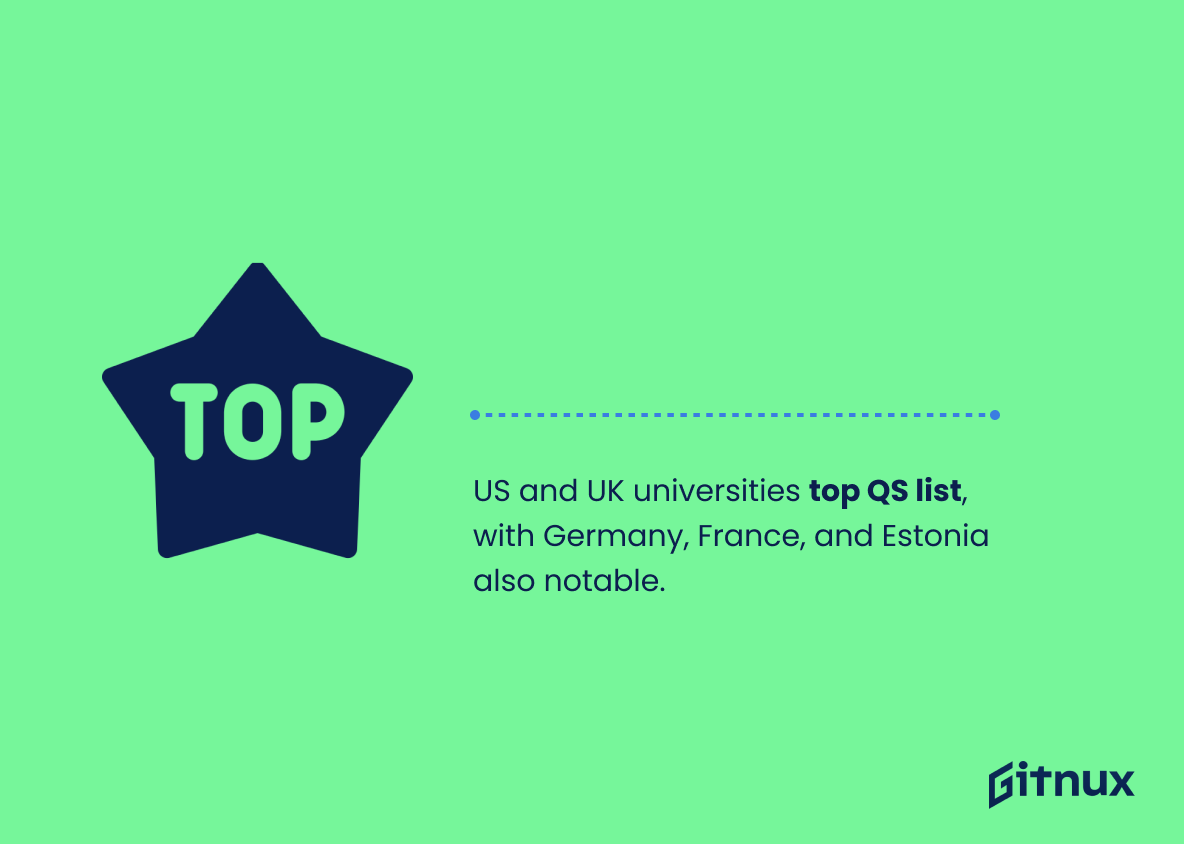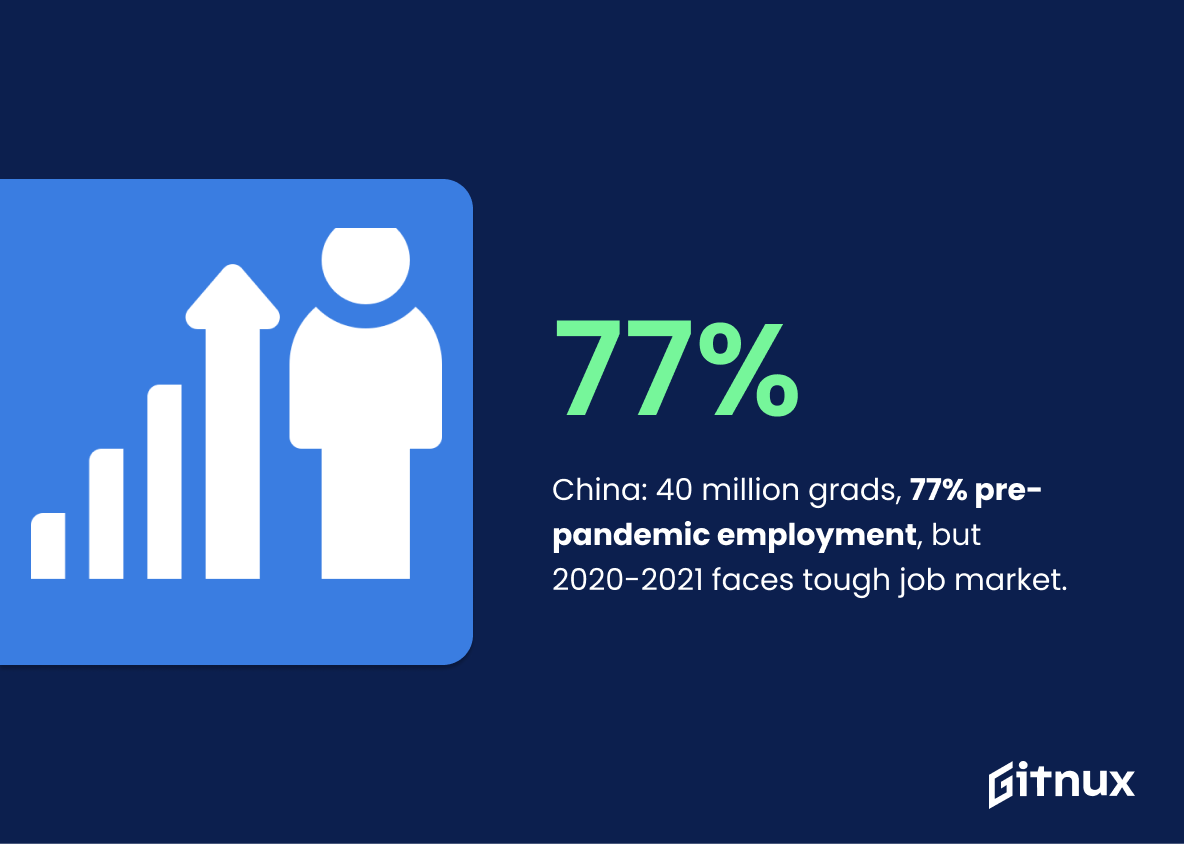The college years are a time of exploration and growth, but for many students, the thought of what comes after college can be daunting. The job market is competitive and ever-changing, and it can be difficult to know where to start.
Fortunately, there are some key statistics that can help you make informed decisions about your career path. In this blog post, we’ll take a look at the latest jobs after college statistics, and discuss how they can help you make the right decisions for your future.
Jobs After College: Most Important Statistics
Recent male graduates in the EU were more likely to find work than their female counterparts, with a difference of 2.9 percentage points.
Over the past five years, the number of college graduates in China has risen to 40 million, with 77% getting a job before graduation, but due to the pandemic, graduates in 2020 and 2021 have faced a tougher job market.
Jobs After College: Statistics Overview
The job market for recent college grads has taken a major hit due to the Covid-19 pandemic, with entry level job openings falling by 73%, internship opportunities dropping, and unemployment rates for young people ages 15-24 significantly higher than the overall rate.
The job market for recent college grads has been significantly impacted by the pandemic, making it more difficult for them to find employment. This could have long-term implications for the job market and could lead to a decrease in wages and job security for recent college grads.
The percentage of Americans with a bachelor’s degree has increased in the last decade, with women now more likely to graduate than men. College graduates have lower unemployment rates and higher wages than those without a degree, and this gap has widened due to the pandemic.
Having a bachelor’s degree is an important advantage in the job market, as it increases the likelihood of employment and higher wages. This is especially important in the current economic climate, as the pandemic has made it more difficult for those without a degree to find and keep jobs.
College graduates have a higher employment rate than those with a high school diploma or less, with 83% of bachelor’s degree holders employed compared to 68.8% of high school diploma holders.
A college education can significantly improve an individual’s employability and earning potential. This is evidenced by the higher employment rate of college graduates compared to those with a high school diploma or less.
The unemployment rate for college graduates is higher than the general population, and many are underemployed in jobs that don’t require a college degree.
Having a college degree does not guarantee a job, and that many college graduates are struggling to find employment in their field. This can lead to feelings of discouragement and disillusionment among college graduates, as well as a lack of motivation to pursue further education or training.
A growing number of people without a bachelor’s degree are out-earning those with one.
A bachelor’s degree is not necessarily a guarantee of higher earnings, and that other educational paths can lead to higher earnings.
This could be beneficial to those considering their educational options after high school, as it suggests that there are viable alternatives to a bachelor’s degree.
Recent male graduates in the EU were more likely to find work than their female counterparts, with a difference of 2.9 percentage points.
This matters because it highlights the gender gap in employment rates, which can have a long-term impact on the economic opportunities available to young adults in the EU.
Universities in the US and UK dominate the top 50 positions in the QS college listing, with other EU countries such as Germany, France, and Estonia also having a notable presence.
Europe is still a viable option for students looking for a good job after graduation. Despite the recent adoption of stringent visa and immigration rules, there are still post-study work streams available for qualified professionals and deserving students.
A record 10.8 million Chinese university graduates are entering one of the worst job markets in decades, with youth unemployment more than three times the overall rate and contract offers cancelled due to COVID-19.
College graduates are facing due to the current economic climate. With the job market in a downturn and contract offers being cancelled, it is becoming increasingly difficult for college graduates to find employment.
This is a major concern for college graduates, as it can have a significant impact on their future career prospects.
Over the past five years, the number of college graduates in China has risen to 40 million, with 77% getting a job before graduation, but due to the pandemic, graduates in 2020 and 2021 have faced a tougher job market.
This shows the impact of the pandemic on the job market for college graduates. It highlights the disproportionate impact on private companies, which provide the majority of jobs nationwide, but only receive a small percentage of resumes from college graduates. This indicates that college graduates in China are facing unprecedented challenges in the job market, which is further compounded by the rising number of graduates.
Conclusion
In conclusion, jobs after college can be hard to come by, but there are still plenty of opportunities out there. With the right education, experience, and networking, you can find a job that is both fulfilling and financially rewarding.
It is important to remember that the job market is constantly changing, so it is important to stay informed and up-to-date on the latest jobs after college statistics. With the right knowledge and resources, you can find the perfect job after college.
References
1 – https://www.forbes.com/sites/ashleystahl/2021/06/08/the-outlook-on-the-job-market-for-college-grads-in-2021/?sh=6c4e6c7747ef
2 – https://www.pewresearch.org/fact-tank/2022/04/12/10-facts-about-todays-college-graduates/
3 – https://research.com/universities-colleges/college-statistics
4 – https://www.insidehighered.com/quicktakes/2020/02/18/41-recent-grads-work-jobs-not-requiring-degree
5 – https://www.npr.org/2021/10/07/1043737586/college-degree-high-school-diploma-high-paying-trade-jobs
6 – https://ec.europa.eu/eurostat/statistics-explained/index.php?title=Employment_rates_of_recent_graduates
7 – https://studyeu.org/guide-advice/top-3-eu-countries-to-get-job/
8 – https://www.reuters.com/world/china/record-numbers-chinese-graduates-enter-worst-job-market-decades-2022-06-23/
9 – https://news.cgtn.com/news/2020-12-02/China-s-9-09m-college-graduates-face-tough-job-market-VT8jj7DoRO/index.html
ZipDo, cited June 2023: Jobs After College Statistics

